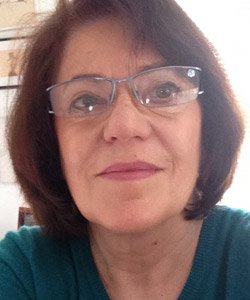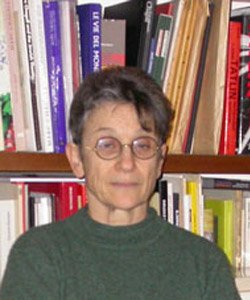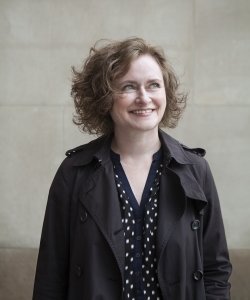26 October 2017 - Session 3
-

Eva Forgacs
The International of the Square: Reception of the Russian Avant-Garde Abroad 1920s-1970s
Fascination with the art of the Russian avant-garde abroad started in post-World-War-I Berlin, where the left-wing community expected Lenin’s prediction that Germany will be the second country to succumb to Communism, to come true. The world revolution was to happen in Berlin. This was the framework of the 1922 First Russian Exhibition, and an extension of this was Kazimir Malevich’s solo exhibition in 1927.
Malevich’s rediscovery starting in the 1950s was part of the retrieval of modernism and the 1920s avant-gardes in general in Western Europe. The reappearance of Malevich’s work was a specific, unique case as he had left a body of work and writings in Germany that were retrieved after World War II. The subsequent history of his artistic resurrection in the West is exceptional, as it happened after his death. I would like to discuss the revival of interest in Malevich starting with Alfred Barr’s purchase of some of his work in 1935 to the Stedelijk Museum’s 1957 exhibition and beyond. I would like to point out the cultural pattern as well as the personal peculiarities that manifested in this process. -

Nicoletta Misler
Kazimir Malevich Goes to Rome
During the 1950s through 1980s, whether for cultural or ideological reasons, Italy played a formative role in the rediscovery and promotion of the Russian avant-garde, a development reflected in publications (e.g. Giorgio Kraiski’s translation of Benedikt Livshits’s memoirs in 1967) and exhibitions (e.g. Il Contributo Russo alle Avanguardie Plastiche, Milan: Gallerie del Levante, 1964). Among those pioneering enterprises, now almost forgotten in the recent historiography of Russian Modernism, was the exhibition “Casimir Malević” organized by Palma Bucarelli, then director of the Galleria Nazionale d’Arte Moderna in Rome, between 5 May and 2 June, 1959. In the wake of the Stedelijk Museum’s acquisition of part of the Malevich estate, “Casimir Malević” was the first Malevich retrospective in Italy, if not in Europe, and served as a milestone in the reassessment of Russian Cubo-Futurism and Suprematism. Drawing on archival materials, I shall be discussing the composition and public reception of “Casimir Malević” and its catalog (with introductory essays by Bucarelli and Giovanni Carandente), giving particular attention to the responses by particular contemporary artists such as Franco Angeli, Claudio Parmiggiani, and Mario Schifano. In turn, a principal avenue of enquiry will be the influence of Bucarelli’s exhibition with its advocacy of Malevich on the movement of Pop Art Romana in the 1960s and 1970s and its connections with proponents such as the Galleria La Tartaruga. -

Natasha Kurchanova
The Art of Objecthood: Tatlin through the Eyes of Flavin
In the course of nearly three decades, from 1964 until 1990, a celebrated American Minimalist artist Dan Flavin made 39 works entitled “monuments” for V. Tatlin, to honor a no less celebrated artist of the Russian avant-garde. The work consisted of tubes of fluorescent light stacked either next to each other to resemble the shape of a tower or in other, slightly different, configurations. The title of the work and its prevailing shape referred to Vladimir Tatlin’s most famous piece, The Monument to the Third International (1919-1920), frequently called Tatlin’s Tower. While Flavin made this series of “monuments” to V. Tatlin a centerpiece of his life’s work, he appeared both to celebrate and lament the utopian moment of its creation, declaring that his obsession with the Russian artist and his oeuvre was “prompted by the man’s frustrated, insistent attitude to attempt to combine artistry and engineering.” My paper will examine the conditions of Flavin’s statement in light of American Minimalism’s fascination with the Russian avant-garde and specifically in light of its orientation toward the so-called “objecthood,” which a conservative American critic Michael Fried contrasted with art proper. The paper will also revisit the premises of the Minimalist “art of objecthood,” in which, according to Donald Judd, the work is characterized by being “neither painting nor sculpture” in its coming closer to painting, while resembling sculpture. The paper will position Tatlin’s pioneering step beyond the confines of the canvas within this trajectory of the art of objecthood, which was determined post factum by his American cohorts.
-

Matthew Drutt
The Avant-Garde's Ambassador to the West: El Lissitzky's Jewish Heritage
Alongside Kazimir Malevich and Vladimir Tatlin, El Lissitzky emerged as one of the most venerated members of Russian Modernism in the West. Through his frequent travels to Germany, Holland, Switzerland, and other countries, he was able to cooperate personally with colleagues in design, architecture, publications, photography, exhibitions, and conferences, exploring shared ideas and debates on the evolution of modernism. Beginning with his first visit to Berlin from Vitebsk in 1921, he quickly established ties between Russian, German, and Dutch artists, retaining his engagement with Jewish themes that began in 1916, when he was part of a group of Russian artists concerned with establishing a national identity for Jewish art. Perhaps due to his training as an engineer and an architect, he was naturally inclined toward collaboration. Аmong his first projects in Berlin were the illustrations for Ilya Ehrenburg's book Six Tales with Easy Endings (1922), which contains a collage with cryptic Jewish imagery. The same year, Lissitzky and Ehrenburg also pubished three volumes of a journal entitled Veshch/Gegenstand/Objet, which appeared in three languages. This journal was a clarion call for the new art in Russia and its connection to the European vanguard, with contributions from writers and artists from Russia, as well as such figures as Le Corbusier, Theo van Doesberg, Fernand Leger, and Gino Severini among many others.
While he was widely exhibited and collected in the West, few exhibitions or publications have given ample attention to his identity as a Jew, something I maintain that he retained throughout his life, in spite of public rhetoric that might seemingly contradict this. In this paper, I will confine my remarks to his work from the late teens to the mid-1920s, when his shift to a non-objective visual language, and his public persona as a more Western-looking professional artist suggested that he had moved on to a more secular form of expression. To the contrary, I will show that Lissitky continued to remain connected to his Jewish heritage, both overtly and covertly.
